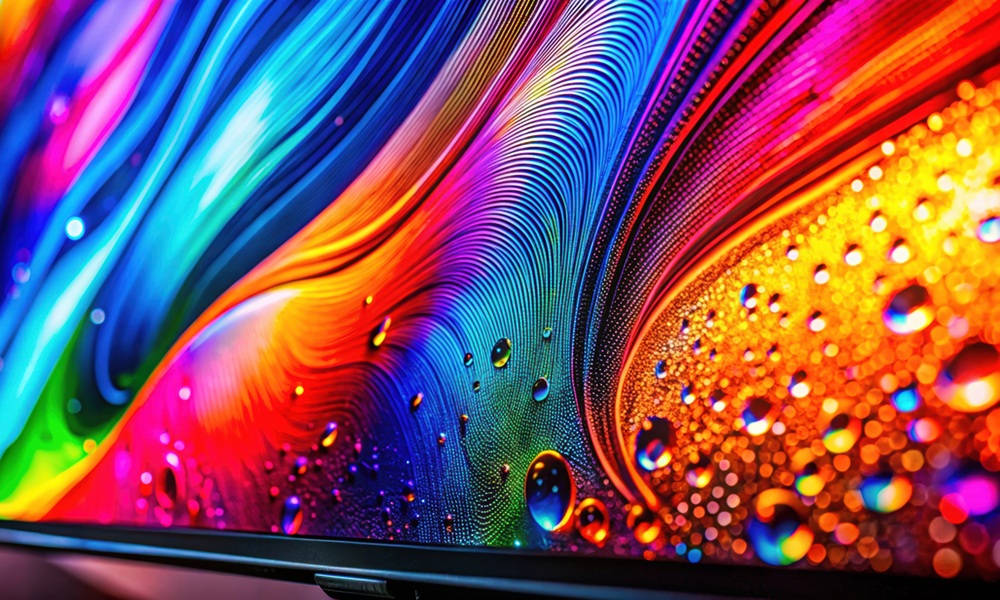Researchers from the University of Cambridge and the Eindhoven University of Technology say they have created an organic semiconductor, known as a chiral semiconductor, that could dramatically improve the efficiency of OLED display technology.
OLED has become a popular display technology in a variety of devices, including TVs, commercial displays, smartphones, laptops, monitors, and essentially anything with a screen. However, the technology is expensive and not very energy efficient. In fact, researchers say current OLED displays waste a “significant amount of energy” due to the way screens filter light.
A Brighter, More Efficient OLED
The research, published in the scientific journal Science and summarized by the University of Cambridge’s media relations department, claims that researchers developed a new way to reduce those losses via a new kind of organic semiconductor called a chiral semiconductor that emits circularly polarized light. For a better understanding of what that even means, we’ll use the university’s own words:
“The semiconductor they developed emits circularly polarized light—meaning the light carries information about the ‘handedness’ of electrons. The internal structure of most inorganic semiconductors, like silicon, is symmetrical, meaning electrons move through them without any preferred direction.
However, in nature, molecules often have a chiral (left- or right-handed) structure: like human hands, chiral molecules are mirror images of one another. Chirality plays an important role in biological processes like DNA formation, but it is a difficult phenomenon to harness and control in electronics.

2024 Lighting Controls and Fixtures Report
Lightapalooza took place in late February, and the growth of the event has mirrored the rapid ascension lighting fixtures and controls.
Download your copy now!But by using molecular design tricks inspired by nature, the researchers created a chiral semiconductor by nudging stacks of semiconducting molecules to form ordered right-handed or left-handed spiral columns.”
Professor Sir Richard Friend from the university’s Cavendish Laboratory, who co-led the research, says the new chiral semiconductors offer “incredible flexibility” and enables chipmakers to create new structures, like chiral LEDs.
“It’s like working with a Lego set with every kind of shape you can imagine, rather than just rectangular bricks,” Friend said in a news release.
How the Chiral Semiconductor Works
According to researchers, the chiral semiconductor is based on a material called triazatruxene (TAT) that self-assembles into a helical stack, allowing electrons to spiral along its structure. Imagine the threads of a screw.
When the self-assembled TAT is excited by blue or ultraviolet light, it emits bright green light with strong circular polarization, which researchers say is an effect that has been difficult to achieve in semiconductors. This allows electrons to move efficiently while affecting how light is emitted in an OLED display.
The result, researchers say, is “record-breaking efficiency, brightness and polarization levels” that could change how OLEDs are made.
“We’ve essentially reworked the standard recipe for making OLEDs like we have in our smartphones, allowing us to trap a chiral structure within a stable, non-crystallizing matrix,” said co-first author Rituparno Chowdhury, from Cambridge’s Cavendish Laboratory. “This provides a practical way to create circularly polarized LEDs, something that has long eluded the field.”
Beyond displays, researchers say this development also has implications for quantum computing and spintronics—a field of research that uses the spin, or inherent angular momentum, of electrons to store and process information, potentially leading to faster and more secure computing systems.
If you enjoyed this article and want to receive more valuable industry content like this, click here to sign up for our digital newsletters!






